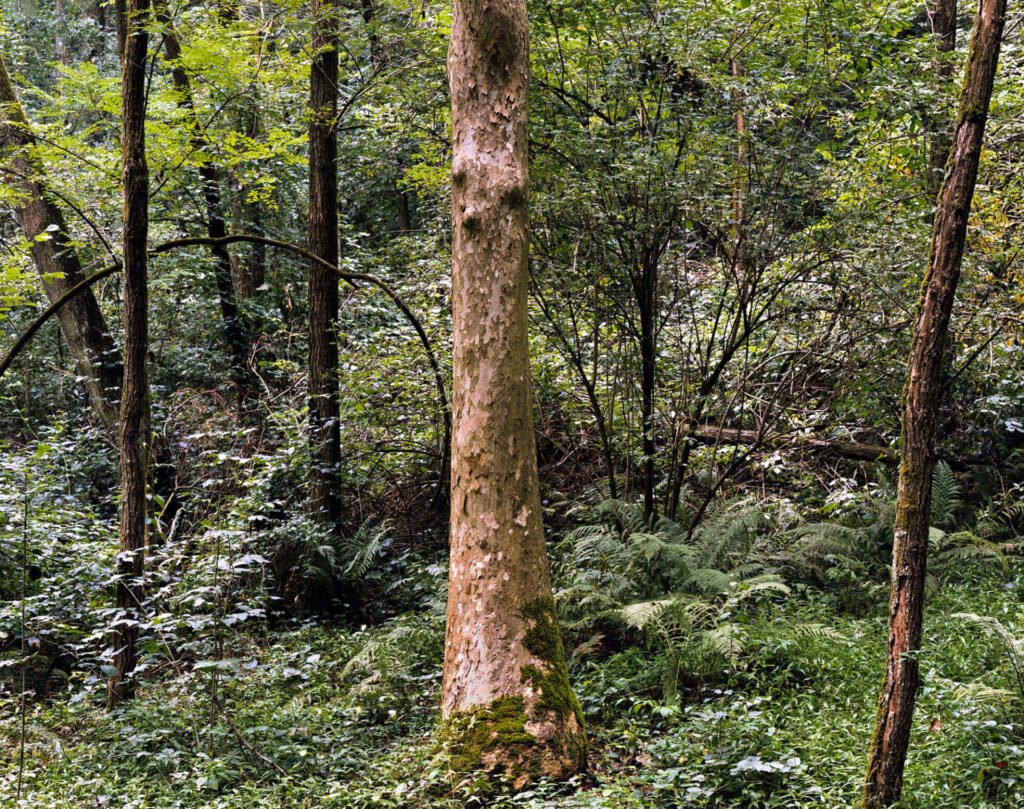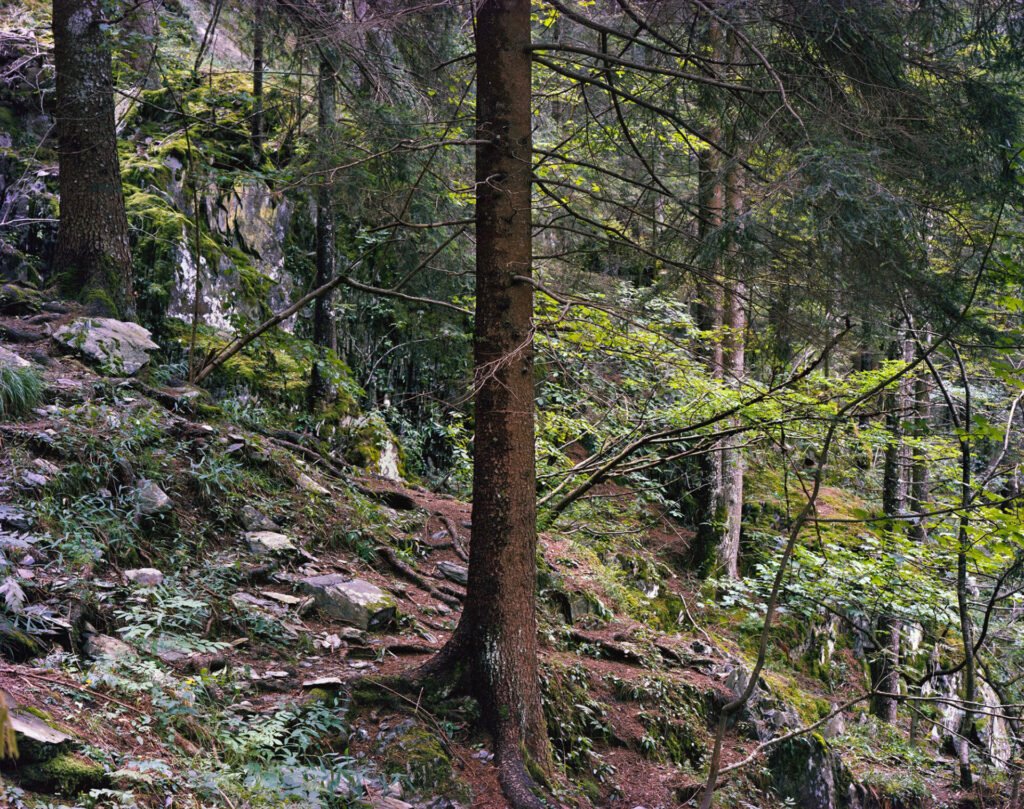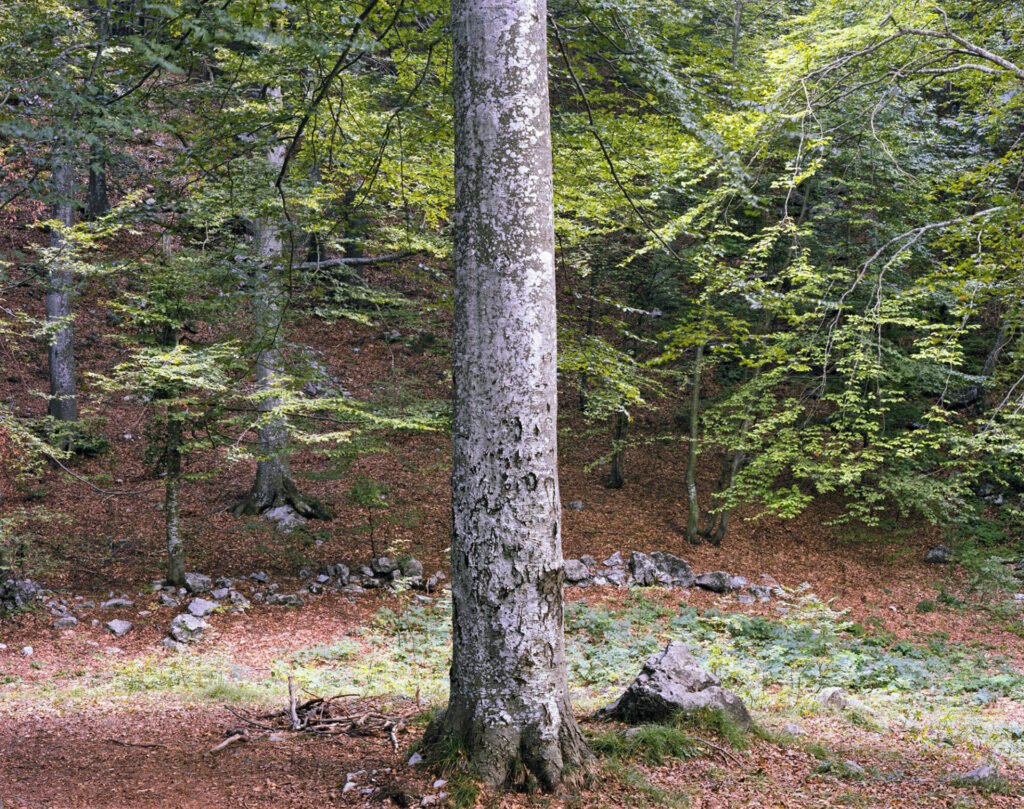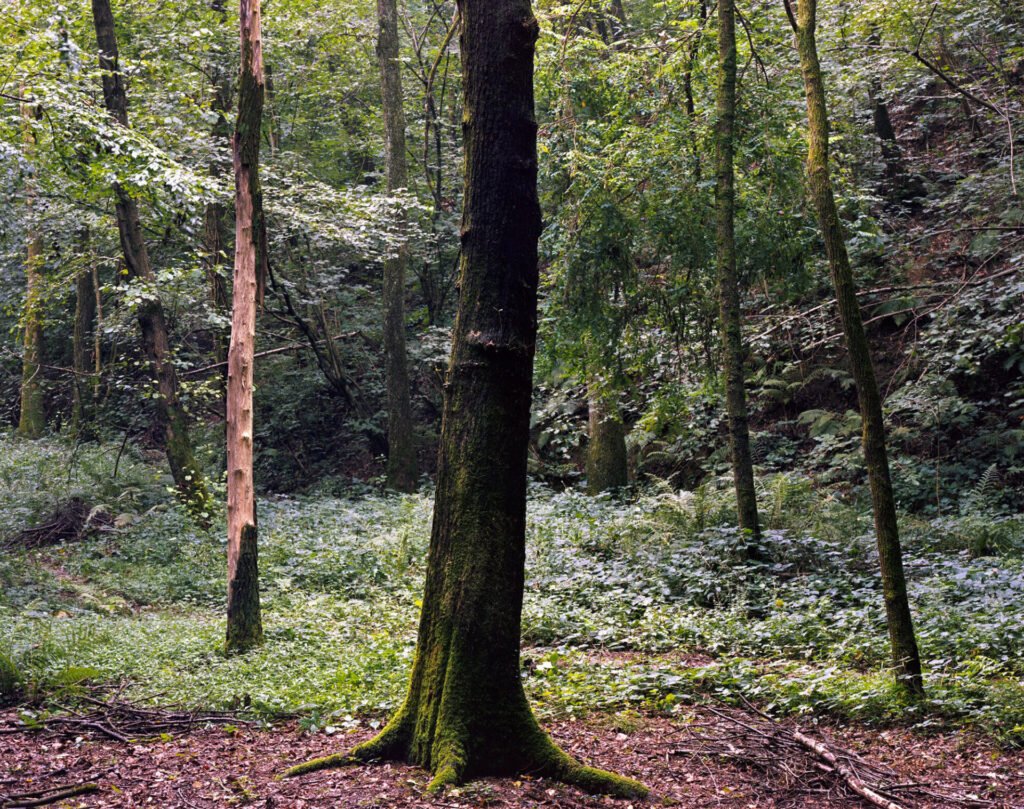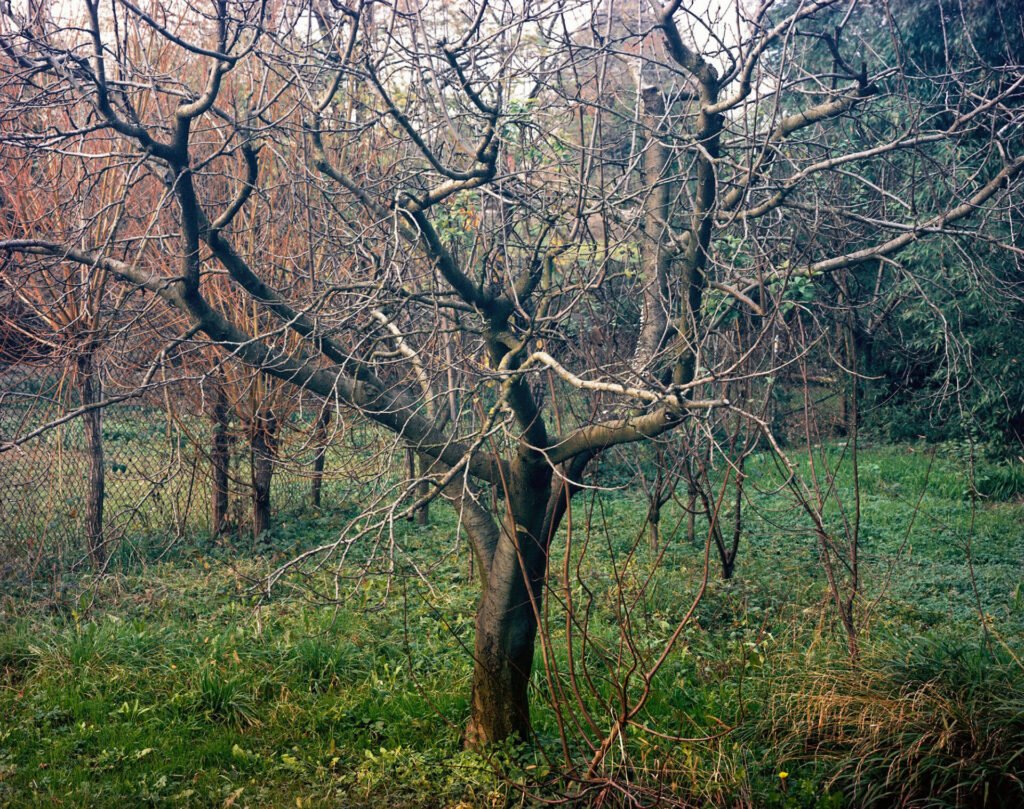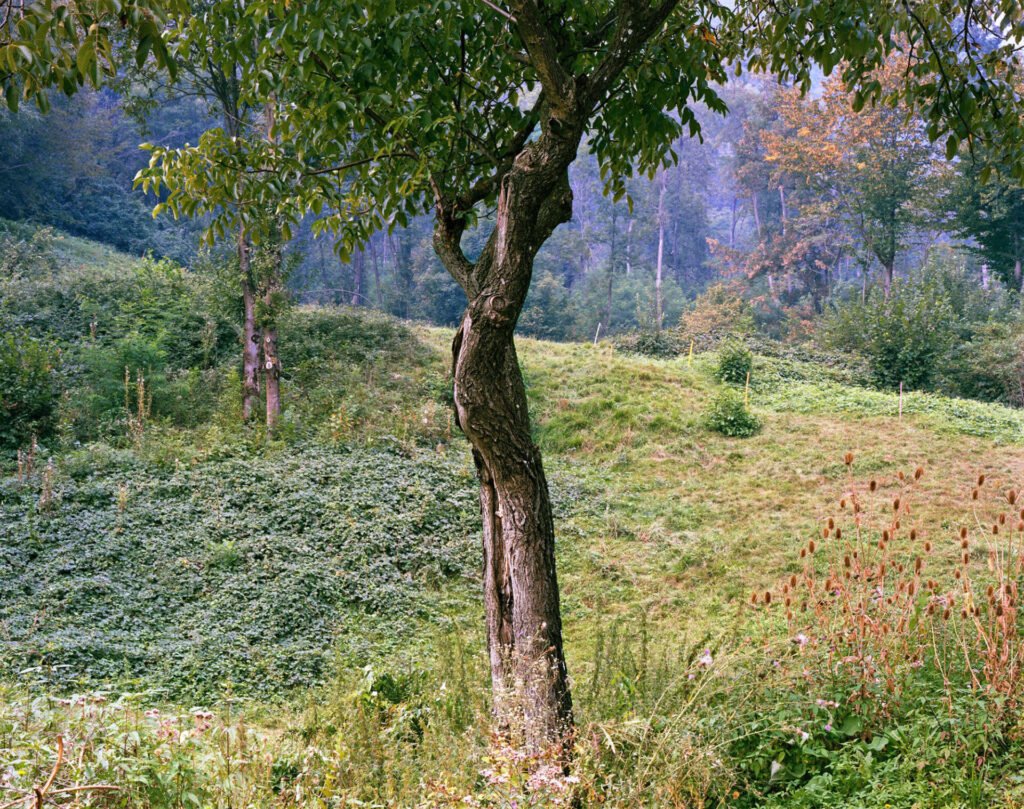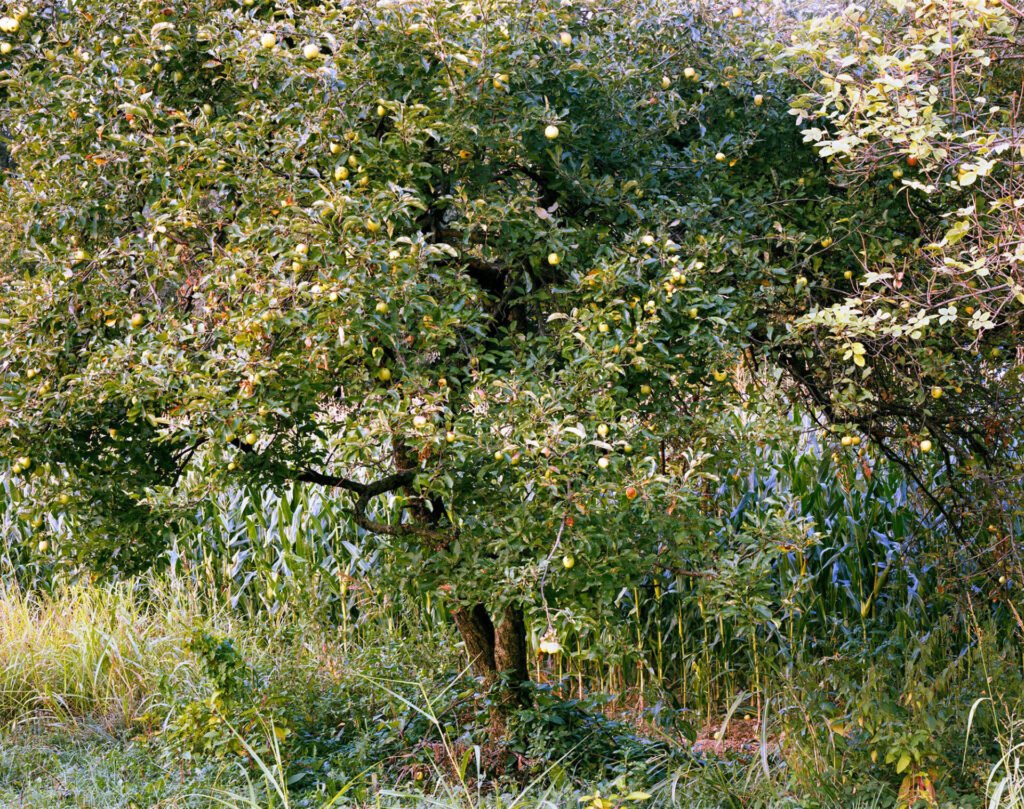Looking Trees, 2011 – ongoing
What do we see when we are looking at a tree? Bark, leaves, branches, habit, every species has a “personality” and every single tree can convey different moods and feelings. As a botanist, I often keep a little lens with me. A magic object, as also stated by French philosopher Gaston Bachelard in “The poetics of space”, 1958: “the botanist’s magnifying glass is childhood rediscovered.” Through a lens, everything looks fresh, closer and even bigger. Maybe because of my botanist attitude, I choose to stand close to my subjects, fulfilling the frame with the sensuality of trunks and crowns, also guided by a strong fascination for 19th-century paintings, when artists like J. Constable started to get closer to their subjects, as in “Study of the trunk of an Elm tree”, circa 1821. Trees are probably the most represented motif in the history of painting and one of the very first subjects of our childhood drawings. One day a dear friend of mine -Andrea- tells me a story: when he was a young kid he used to cutout photographs of trees from his grandfather’s magazines, then stuck it in a notebook as inspirations for his earlier watercolors. To preserve and feel protected, this is looking at trees.
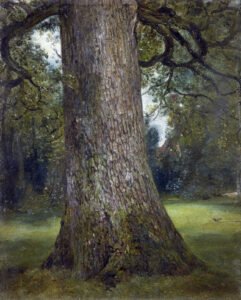
Study of the Trunk of an Elm Tree, John Constable (1776–1837), Victoria and Albert Museum




